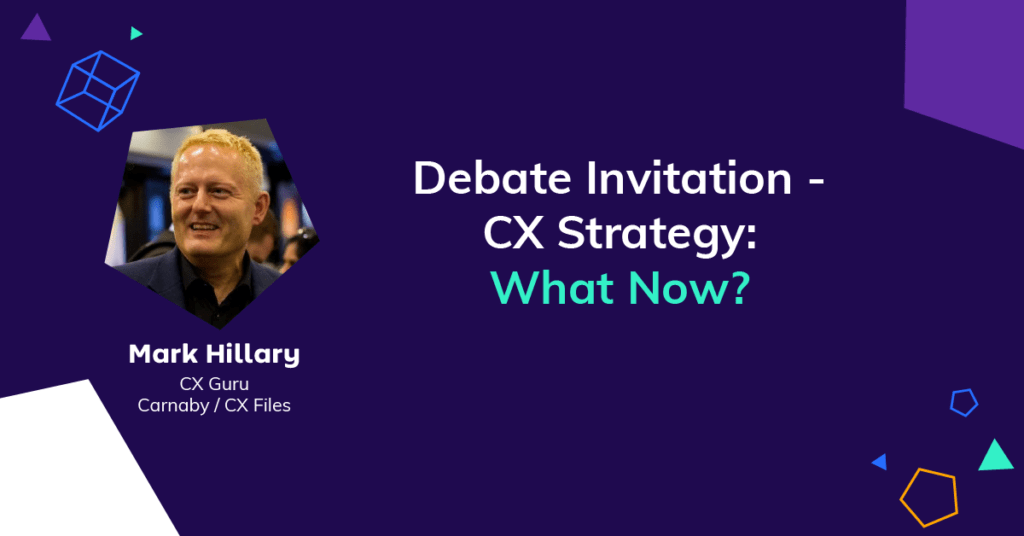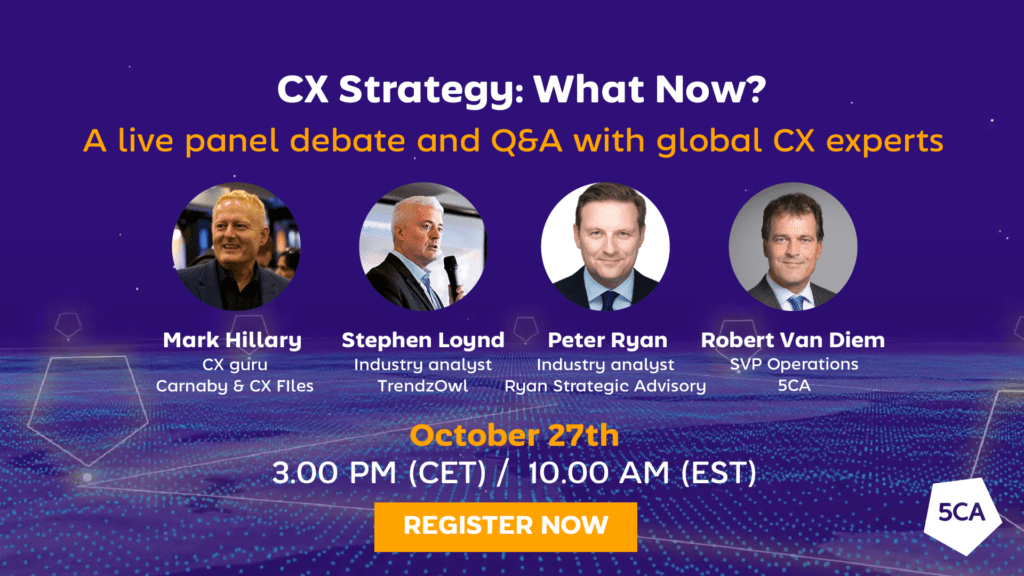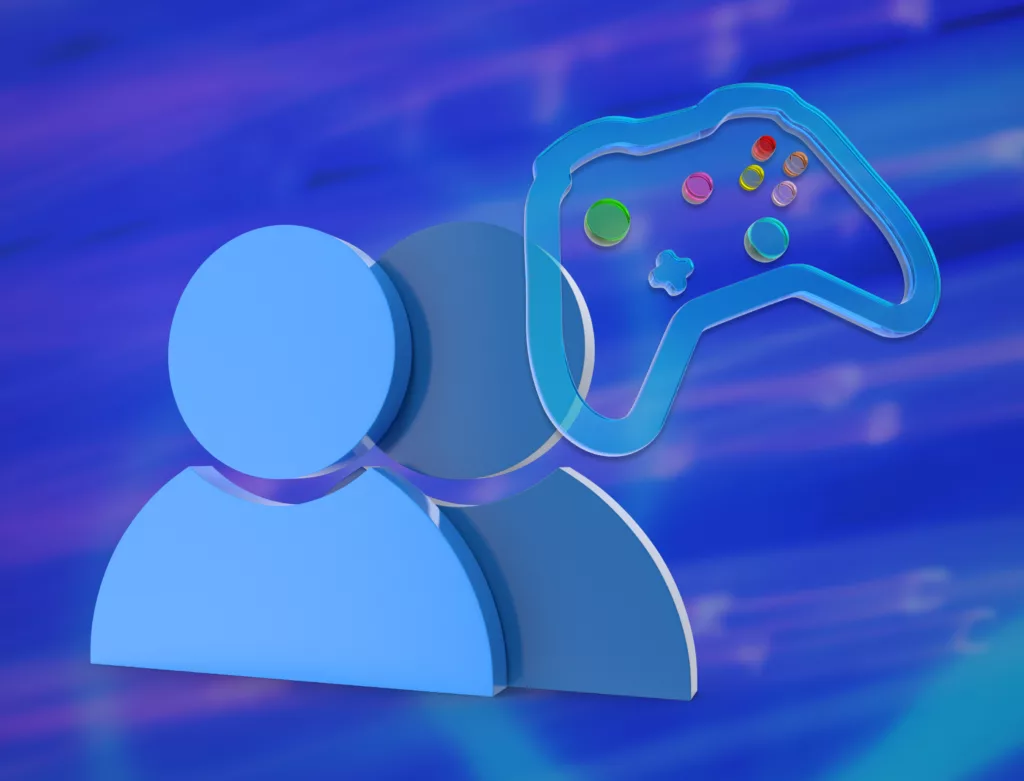I’m pleased to announce that I will be moderating a webinar hosted by 5CA on October 27th. The title is CX Strategy: What Now? I know you might be thinking “another day, another webinar invitation,” but as I’m chairing the debate I want to try making this one a little different. We can’t meet at conferences right now so the very least anyone planning a new webinar can do is to ensure it’s interesting and this one should hit the ball out of the park.

CX experts
The panelists are:
Robert is based in the Netherlands, Stephen in the USA, Peter is in Canada, and I’m in São Paulo, Brazil so this is a very geographically diverse group – even if we all look like a bunch of guys that might wear Phil Collins t-shirts at the weekend.
This is a great group to comment on where CX is heading. We are now in Q4 and it’s clear that CX companies are trying to plot a path into 2021. The analysts are all talking of resilience, but what does it mean? More working from home or more onshoring? Peter is constantly publishing CX commentary, Stephen is constantly asking if we need to change how modern companies function, and Robert works for a company that embraced work-from-home years ago – over 95% of people at 5CA are permanently based at home. I’ve even talked about it on my CX Files podcast.
Topics
The webinar has some general themes focused on changes in CX strategy:
- How Covid-19 has changed digital transformation – which industries are changing fundamentally and forever?
- The essentials for building a CX strategy that will help you through these uncertain times
- How to determine which CX partner can build flexibility into your business model
- Assessing whether you need one CX partner or multiple partners to enhance customer service resilience
It is commonly accepted that a CX partner is required when building a CX strategy today. Building an omnichannel customer service strategy that embraces all the major social media channels, voice, chat, text, with predictive data analytics and in all the languages your global customer base is using isn’t simple. Building CX in-house is more complex than ever so in this webinar we are going to explore how strategies are changing post-covid and what you need to look for in a partner.
Multisourcing and building a resilient CX strategy are topics that are going to be really important in 2021. Nobody ever wants to see a repeat of 2020. The focus will be on finding a partner that can keep the customer service function running whatever happens next year – resilience is going to be the key strategy for 2021.
These are the broad themes – how to design a strategy and how to find a partner – but I want to know what you would ask this group of experts? I’m chairing the session and I will steer the panel towards these fundamentally important subjects, but I’d like to have a few curveballs to throw at them – some questions that get into the heart of the matter. We will only have one hour and in addition to my own comments, three experts will all be vying for some airtime. Let’s make the most of it.
Please leave your ideas or questions here as a comment or if you would prefer to message me privately just send a direct message from my LinkedIn profile here.

Please click here to register for the webinar










